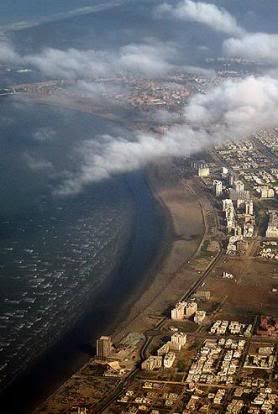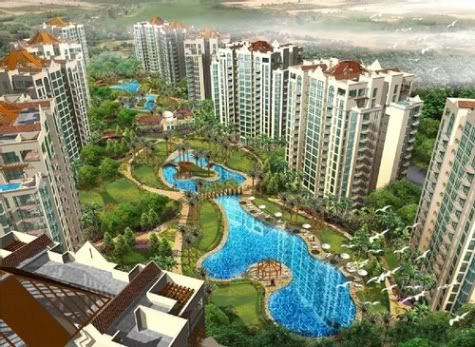 Gentrification is relatively a contemporary term that was first used in ‘London: Aspects of Change’ by Ruth Glass in 1964. Literally it means a planned change in the population of land users in such a way that the new users are of a higher socio-economic status than the last users. Along with this there is also a change in the constructed environment through an investment in the fixed capital. The noticeable changes of gentrification are dependent on the differences in the socio-economic status of the new and older residents. Gentrification is not confined by time limitation and hence even though the term is relatively new, any process that fits that basic description of displacement/replacement of one group for another would constitute gentrification. Some other rules that would qualify a process as a process of gentrification include the fact that gentrification is mostly an inner city process, it takes places mostly in residential areas, and that it involves the rehabilitation of unmaintained buildings even if they are architecturally attractive.
Gentrification is relatively a contemporary term that was first used in ‘London: Aspects of Change’ by Ruth Glass in 1964. Literally it means a planned change in the population of land users in such a way that the new users are of a higher socio-economic status than the last users. Along with this there is also a change in the constructed environment through an investment in the fixed capital. The noticeable changes of gentrification are dependent on the differences in the socio-economic status of the new and older residents. Gentrification is not confined by time limitation and hence even though the term is relatively new, any process that fits that basic description of displacement/replacement of one group for another would constitute gentrification. Some other rules that would qualify a process as a process of gentrification include the fact that gentrification is mostly an inner city process, it takes places mostly in residential areas, and that it involves the rehabilitation of unmaintained buildings even if they are architecturally attractive.

There are currently very few countries where gentrification is not taking place. These include the more industrialized countries as well as the third world ones but as stated earlier, the process is most notable depending on the differences in the socio economic statuses of the new and older residents. In the case of Pakistan, gentrification is spreading like an uncontrolled weed in the larger and smaller cities but due to the differences in status of the population, the disadvantages are greatly outweighing the advantages for the people that are getting displaced in the process. Contrary to planned gentrification that keeps into account the needs of the displaced, there is rarely any such planning done in the Pakistani cities where the main goal of the new investors is to get the most for their money regardless of what happens to the people whom their projects uproot in the area. For instance gentrification projects seek to achieve success by targeting their efforts by the use of revolving funds that also focus on the rehabilitation of architecturally important housing for the low and moderate income residents to give them a chance to co-exist with the new groups. But since this is not the case with Pakistan, the result is an even worse rift between well off and the not so well off.
While the disadvantages of gentrification are common in all societies since it causes many of the older, and long term residents and low and middle-income renters to get pushed out due to higher rents and property taxes, this situation is far worse in Pakistan where these former residents find themselves against and rock and a hard place; the new residences are too expensive for them to afford and the places they are forced to move into offer marginal facilities in terms of educational institutions, medical facilities, transport, and above all security. To make things worse, unlike the planned gentrification projects that keep allowance for the not so well off to give them a share in the new development, no such allowances are kept in our cities. The result is what is seen in the major cities; an ever widening gap between the rich and the poor where the best schools, shopping areas, eateries, general civic conditions, and above all state of security are all concentrated in the new areas. The rest can only gape and gawk from afar.
 The fact that unplanned gentrification can cause conflict such as it is doing in Pakistan is not a random observation but an accepted facet of the process. Gentrification has led to conflict in many cities where two factors provoke it; the degree of polarization and the practices surrounding property rights. Atkinson and Bridge state in ‘Gentrification in a Global Context’,
The fact that unplanned gentrification can cause conflict such as it is doing in Pakistan is not a random observation but an accepted facet of the process. Gentrification has led to conflict in many cities where two factors provoke it; the degree of polarization and the practices surrounding property rights. Atkinson and Bridge state in ‘Gentrification in a Global Context’,
‘In places characterized by a high degree of social polarization, short on legally practiced recognition of the rights of users of place and long on legally practiced recognition of the rights of owners of space, the conflict inherent in gentrification becomes inflammatory’
In cases where such a conflict is likely to occur it is suggested that political engagement be involved to curb the occurrence of such a conflict and a change of societal relations is also advised. But sadly none of these two solutions have been brought into play in any gentrification projects in Pakistan and there is no possibility that they will be in the future either. The result is the utter chaos that is witnessed between the various classes in the country where the upper classes consider it their right to take over any area of the city they please, develop it to their heart’s desire and then turn it into their exclusive property. An example of this is the development of the Clifton beach in Karachi.
The latest development plan on the beach is on the 14 km of prime beach area which is currently accessible to everyone regardless of their background. For many it is the height of enjoyment to come out to the sea and enjoy a day in Clifton. But once the project is complete this source of enjoyment will be taken away and will be made the exclusive sole property of a selected class.
 The gentrification of the beach is no doubt a good idea but not when it violates the public interest in the area. It would be acceptable when the planned walkways and promenades etc. are made available to the public free of cost. But the way the development is planned it will not only destroy the natural environment of the coast but will render nearly the entire beach inaccessible to the common citizens belonging to the low and lower middle income class as they will be unable to afford the cost of the expensive entertainment or the entrance fee that is being proposed there.
The gentrification of the beach is no doubt a good idea but not when it violates the public interest in the area. It would be acceptable when the planned walkways and promenades etc. are made available to the public free of cost. But the way the development is planned it will not only destroy the natural environment of the coast but will render nearly the entire beach inaccessible to the common citizens belonging to the low and lower middle income class as they will be unable to afford the cost of the expensive entertainment or the entrance fee that is being proposed there.
This is just one example of how gentrification in Pakistan is causing the deep rift between classes to get even worse. Though there is a very ambiguous line between the two processes, gentrification can only be beneficial in any society when it involves replacement and not displacement as it is doing in Pakistan. Two other, perhaps more realistic interchangeable terms when discussing gentrification with reference to Pakistan, would be exploitation and nurture. And that is exactly what is happening in any given process or project of gentrification in Pakistan; they wholly exploit one class while wholly nurturing the other. The question to ask is; can the society afford to do this given the already crumbling societal setup in the country?
Gentrification is deeply connected with national and international economic and cultural change and because millions of Pakistanis are suffering at the economic state of the country, they suffer at the hands of gentrification as well. In a society as complex as Pakistan, there is a more pronounced need to employ sociologists when planning projects that affect the entire society so direly and that can potentially either be a bridge between the classes or a deeper trench. But that has never been the case and gentrification too has turned into a major reason for the widening gap between the classes in Pakistani society.
Photo Credits:
1. Shabbir Siraj
2. Edge of space


















































Great post. Gentrification is a topic that always interests me.
“Contrary to planned gentrification that keeps into account the needs of the displaced,”
Hmmm…I am not an expert on gentrification, but from what I know and see around me (for example, Los Angeles and San Francisco), there has been an exodus of the former inhabitants once gentrification becomes deeply entrenched and solidified. I tend to think that gentrification is usually very well planned for those who will commercially benefit (i.e. the wealthy) than for the more disadvantaged residents.
And economically speaking, it seems like the only people who lose out are the previous, impoverished ones. For example, you could very well place a cap on rent for the current residents, but the wealthy business employers who move in, knowing that they can get cheap labor, continue to pay very low wages to the ones who are supposedly protected by some kind of displacement preventive. Or, in the absence of a rent cap, they may be forced to move out, but may continue being employed or seek employment in these now gentrified areas–and they may still get exploited wages wise, not to mention the added expenses of transportation from their new residence to their place of work.
I am also wondering if it’s fair to say that gentrification is often one of the methods in creating a capitalist-style wage-labor dependence, e.g. that in order to survive in these gentrified places, you must either be employed by someone or you must employ someone. I would imagine that it’s very difficult to practice self-subsistence.
Regarding this post specifically on Pakistan, does anyone know where exactly the displaced folks are fleeing too? Like in terms of Karachi, are people moving out to places like Orangi? Or other places?
Karachi’s real estate market is little bit down these days, or you can say its prices are not fluctuating or its not increasing so much. IF you want to invest, I think this would be a right time as you may find some good property in reasonable prices.
Eidee Man, karachi and all other real estate bubbles in Pakistan have burst. So has the real estate bubble in Dubai into which so many Pakistanis have sunk their money. Just goes to prove that if something looks like too good to be true, it probably isn’t.